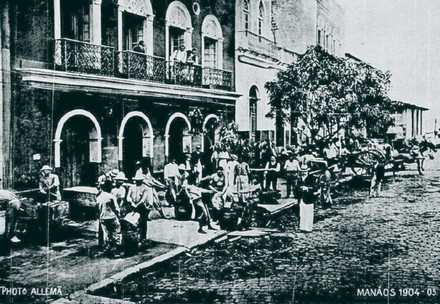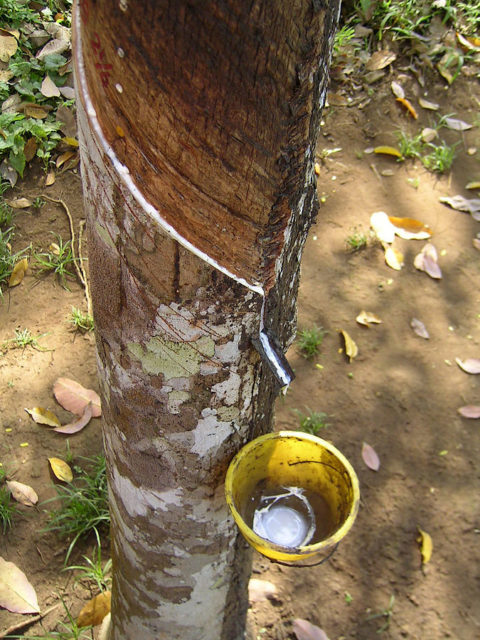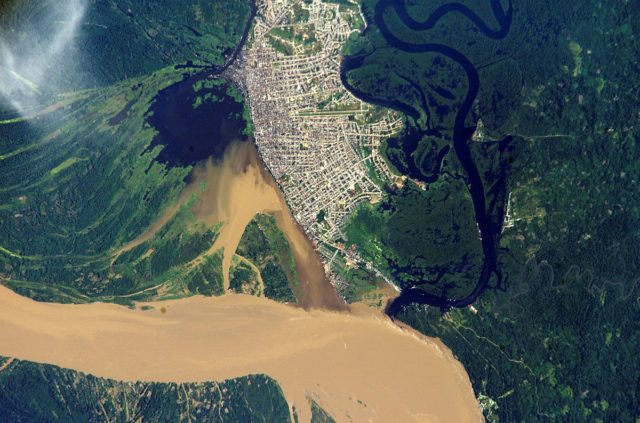The rubber tree is very common in tropical regions like Amazonia. Back in the days, this new and odd substance was reported by Christopher Columbus, but he was not the only person who talk about it.
According to some accounts, in the first half of the 18th century, numerous indigenous people of the Americas were reported to wear waterproof shoes or cloaks. Joseph Priestly, an 18th-century English scientist, and educator also used rubber as an eraser.

The real demand for rubber in Europe did not begin until the 1800s when the first factories which produced rubber items opened in Paris, France. The Industrial Revolution was an additional factor that boosted the need for rubber. As the resource became a desirable and valued commodity, its price started to grow. The number of people involved in the rubber industry consequently increased, too. On the other hand, South Amerindians already had a history of using and producing rubber goods as their continent had plenty of it. They were able to extract a white liquid out of the rubber tree that contained latex and other rubber particles; the process was refined as time passed.
Rubber became a new kind of occupation for the entrepreneurs of the 19th century, which eventually led to the Amazon Rubber Boom. Many Europeans started to travel to South America to make a fortune in the uprising industry. The Amazon Rubber Booms takes a special place in the history of Brazil, but also other countries such is Peru, Columbia or Ecuador. Reportedly, in 1855, over 2,100 tons of rubber was exported from South America. This figure grew to 10,000 tons by 1879, the year when the boom started and lasted until 1912.
The cities, which were previously nothing more than villages, grew extensively. One of the most illustrative examples is the city of Iquitos in Peru, where rubber industry commenced in the 1900s, attracting thousands of European immigrants. In a time span of just a few decades, the village Iquitos evolved into a huge city, also called “the capital fo the Peruvian Amazon.” “This remote city is situated in the Great Plains of the Amazon Basin, nurtured by three rivers: Amazon, Nanay, and Itaya. Home of over 450,000 residents, Iquitos counts for the largest city in the world that cannot be reached by road and is accessible only by river or air,” reports This City Knows.


The extensive growth did not come at no cost for the region. In fact, it completely changed the face of Amazonia. Large workforce was demanded to keep the industry going, and the indigenous population across the Amazon countries were the first to suffer. Many of the local people were virtually exploited by the wealthy owners of the rubber plantations for very poor payments. Moreover, slavery, killing, and similar forms of systematic brutality were also observed. In some areas, up to 90% of the indigenous population diminished because of the rubber boom period.
According to Survival International, “many of the isolated Indians of western Amazonia, for example, are the descendants of the few survivors of the rubber boom which swept through the region at the end of the 19th Century, wiping out 90% of the Indian population in a horrific wave of enslavement and appalling brutality.”
The crimes charged against many men now in the employ of the Peruvian Amazon Company are of the most atrocious kind, including murder, violation, and constant flogging, had also reported Roger Casement, an Irishman who had travelled to the Putumayo region of Peru as a British consul, somewhere at the end of the rubber boom era.
Read another story from us: Ancient Mesoamericans had invented rubber balls as early as 1600 BC
Once rubber plantation was developed in Southeast Asia, the Brazilian rubber market started to decline slowly. However, the rubber boom era will remain as one of the most brutal and bloodiest periods of South-American history. The realm of Upper Amazonia was one that suffered the most, and Putumayo setting a horrific example. On the other hand, distinct regions benefited pretty well from it. Belém and Manaus, the capitals of the Pará state and Amazonas respectively, became two of the most prosperous Brazilian cities during this era.
